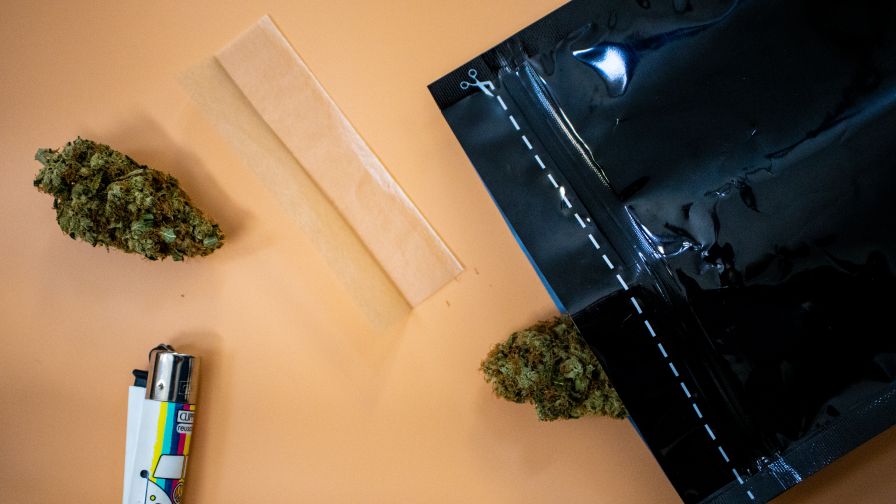Optimizing Packaging for Cannabis Cultivators

Photo: Grove Bags
When it comes to cannabis cultivation and growing, every aspect of the process can significantly impact the final product quality. From the moment the plants are harvested to the time they are consumed, the choice of packaging plays a crucial role. While traditional options like polymer bags, glass drams, and plastic jars have been popular, it’s essential for cultivators to explore advanced technology that optimizes packaging for their valuable harvest.
In the cannabis supply chain, packaging and storage solutions have often relied on co-opting or modifying existing methods, resulting in mixed success. While these conventional approaches may work for high-volume throughput and certain market demands, they fail to address the evolving needs of a growing industry. As cultivators, we need purpose-built solutions that do more than just increase yield, especially during times when consumer buying power is low.
Packaging Extends Beyond What Customers See
Let’s consider the scenario where you’re harvesting your top-quality colas, meticulously trying to preserve the delicate trichomes that have developed to perfection. You carefully cut the branches, ensuring you don’t damage the valuable trichomes. As you place them in your storage containers, you may be unaware of the potential challenges in preserving the trichomes and maintaining the overall quality of the product. Static electricity, exposure to light, and oxidation can all have detrimental effects on the potency and aroma of cannabis. These pitfalls exist at every step of the process, highlighting the need for advanced technology-driven solutions that optimize packaging for cannabis cultivation.
Leverage Technology to Optimize Cannabis Packaging
Technology companies operating in the cannabis space have a crucial role to play in advancing packaging materials and tools without adding complexity to existing processes. The aim is not to reinvent the wheel, but to enhance the tools used in traditional methods. Many time-tested approaches may still be effective; however, they lacked the necessary analysis and research to refine them openly. A great example of this is the lettuce we see packaged on grocery store shelves. If that lettuce was stored in any random plastic bag, there’s no way it would remain fresh and healthy for as long as it does. With the progress made in material sciences, we can now delve deeper into the unique physiological needs of plants such as cannabis. This presents an opportunity for growers to closely examine and optimize every aspect of their cultivation process, ensuring their products stand out from the competition.
However, not all processing or packaging technologies are created equal. Growers are often presented with solutions that end up adding cost and labor to their process without having a tangible return on their investment or an appreciable impact on their product quality. This could include over-engineered equipment adapted from other industries, or packaging solutions that require growers to add manual steps to their process, like active humidity modifiers. Instead, growers should look toward technology that can eliminate manual tasks without causing product degradation, and that can replace inefficient processes without adding steps. Achieving this at the highest level will only come from technology designed around the plant, not by forcing the plant into technologies built for other tasks.
Preserve and Protect the Plant
Similar to coffee, the quality and value of cannabis is directly tied to its aromatic, flavorful, and psychoactive properties. In the case of coffee, those properties come from oils expressed during roasting. Packaging purpose-built for coffee is designed to optimally retain those specific desirable compounds all the way up to the point of consumption. The desirable compounds in cannabis, however, are largely stored in those delicate, hair-thin, easily breakable trichomes. This unique structure alone makes storing and preserving cannabis a task that requires careful consideration.
Advanced packaging materials and designs should ideally minimize static buildup, preventing trichome damage during handling and transportation. Additionally, technology-driven and purpose-built solutions should provide effective barriers against harmful UV light, oxidation, and the rapid evaporation of volatile terpenes. Recent research presented by Grove Bags on its TerpLoc material, for example, examines the effects of these and other factors on volatile plant compounds. This helps to preserve the potency, aroma, and flavor of the final product, ensuring a superior consumer experience. Technologies and packaging jury-rigged from other applications will likely continue attempting to relabel their way into the expanding cannabis industry, but growers would be wise to scout out suppliers that truly understand the plant and engineer for its unique characteristics.









